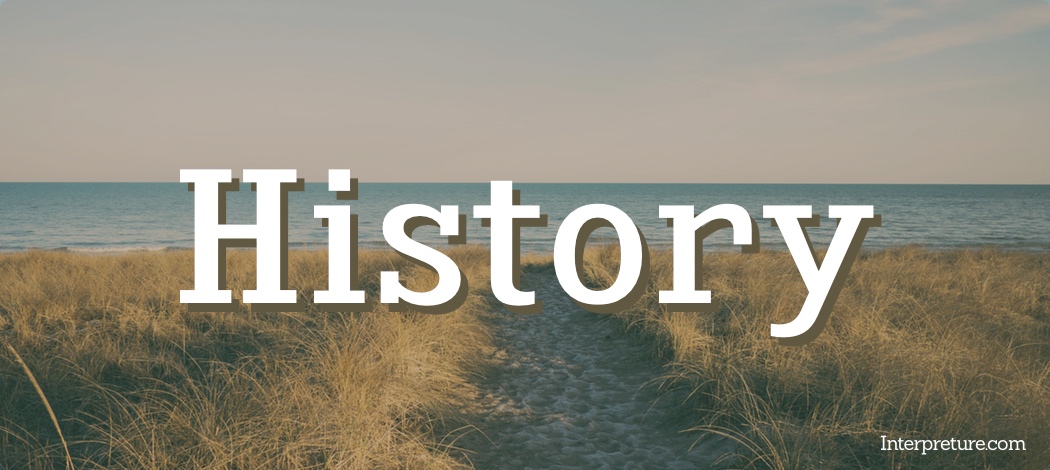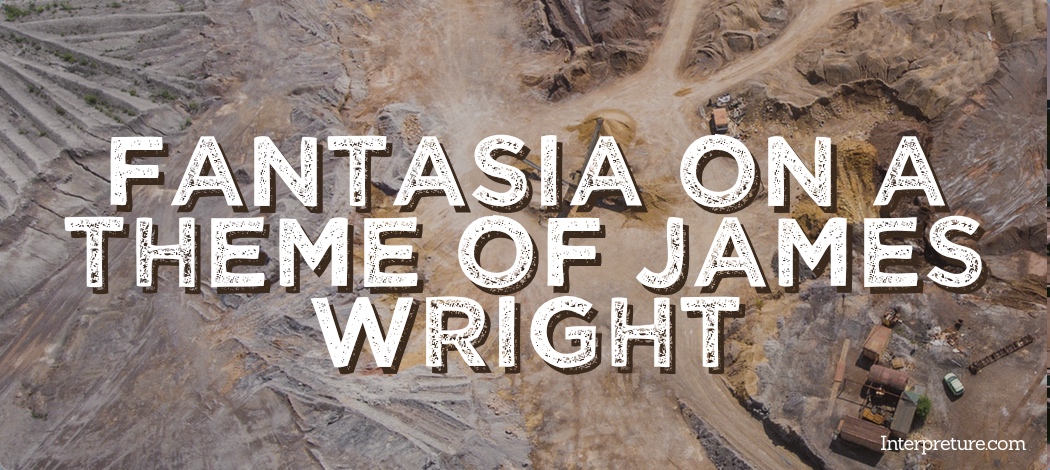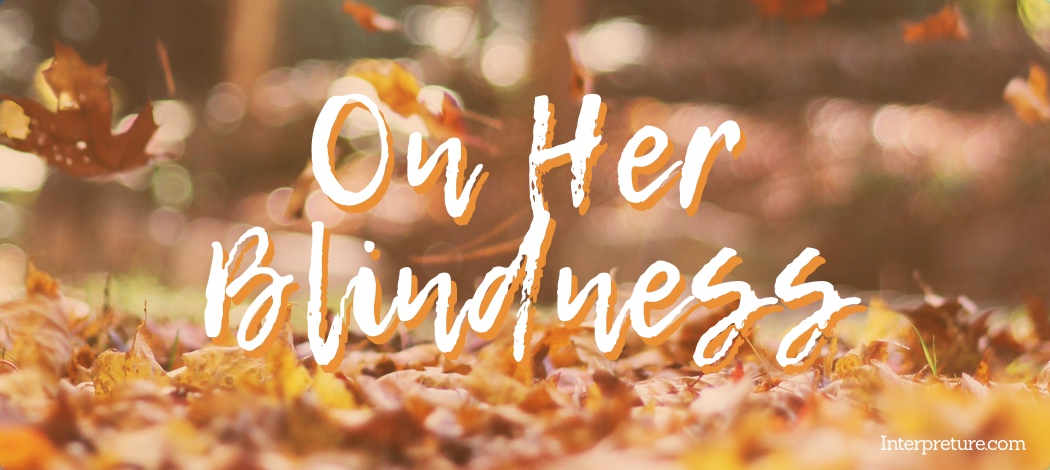‘The Furthest Distances I’ve Travelled’ by Leonita Flynn is a personal poem which is written about her own travels and dreams while she was a student, and how these experiences have impacted on her life. Flynn is a popular Irish poet with published work including the ‘Drives‘ collection which has been shortlisted for various awards, and the ‘Profit and Loss‘ collection which focusses on her marriage and role as a mother. She has also received honours including a Ph.D. from Queen’s University Belfast for English Literature. Many of her works allude to key parts of literary history, such as Chaucer and Wordsworth.
This poem is part of the set of prescribed poems that could be included in the Edexcel English Literature exam, meaning that it is important to study, understand and revise this poem. Click here to see all the prescribed poems from the ‘Poems of the Decade’ collection.

Interpreture gives ‘The Furthest Distances I’ve Travelled’ a difficulty rating of 3, meaning that it is deemed to be of average difficulty. The difficulty is spread relatively evenly throughout the different aspects of the poem, but the varied structure and specific choices in this aspect do give the poem some extra complexity, along with some more obscure meanings in the poem.
‘The Furthest Distances I’ve Travelled’
The poem title immediately shares with a reader that it is likely to be a personal poem, directly discussing the experiences of either the poet or the narrator (in this case, they are the same). This helps communicate meaning to an already quite insightful title, as it can be confidently assumed that the poem will deal with the subject of transition and travel, linked to how it has impacted the narrator. In addition, the use of “furthest” emphasises that there is a wide variety of places visited, and therefore a lot of changes have been experienced. The personal link in the title could be compared to ‘To My Nine-Year-Old Self’.

Poem Structure
When observing the structure of the poem on the page, the line length would be one factor which may draw a readers attention first. For most of the poem, lines are often short, such as only having the one word “however” on the third line of the sixth stanza. Therefore when the final two stanzas transition to all the lines being consistently longer than the rest of the poem, it indicates that a transition and development in thought and communication. The impact on the rhythm of the poem would also be quite substantial as a result of the irregular line length, with the one word lines substantially breaking the flow of the poem and drawing added emphasis. This is particularly unusual for “mity” in the second stanza, deliberately splitting the word “anonymity” across two lines to create forced enjambment, potentially indicating that the narrator’s own decision to travel is creating confusion because of all the new experiences.
The use of punctuation in some parts of the poem is also quite interesting, with frequent hyphens acting as caesura to further impact on the rhythm of the poem. They also act as a break to the typically listing flow of ideas being communicated, so as to focus on specific imagery to further include the reader in the sense of travel and experience, such as with the backpack in the first stanza. This helps to make a reader feel more connected with the narrator, almost as if they have shared the experiences due to the strong imagery, and therefore more effective at creating empathy.
The transition of the rhyme scheme throughout the poem also helps a reader to develop additional interpretations. In the first few stanzas, the rhyme is inconsistent and unclear. However, as the poem progresses the rhyme gains increasing clarity, right to the last stanza in which an AABB pattern is shown. This is open to a wide variety of interpretations, but most likely represents the freedom experienced by the narrator when discussing their travels in the beginning of the poem, with the gradual introduction of a strict rhyme scheme showing greater restrictions and the patterns of everyday life being imposed. It could also be interpreted as representing the greater clarity and focus as the narrator has gained as they have aged.
Poetic Techniques
The ‘voice’ of ‘The Furthest Distances I’ve Travelled’ remains personal throughout, due to the persistent use of “I” in the poem. In addition, by often accompanying the word with a verb, such as “I discover” in the sixth stanza, it further shows the independence of the narrator that they have been doing all these actions and having these experiences on their own. This gives them more perceived authority and experience to be able to talk about these ideas, which makes the reader more focussed on what is being communicated.
There is also the clear technique of using a variety of place names from various locations around the world, and references to other cultures, so as to reinforce the idea of travel. Some readers may find this somewhat unnecessary and overdone, however it is important to consider how different the poem would be without this technique, which would make the idea of travel much more restrained and therefore not as significant for the narrator or reader, and ultimately less effective.
Unlike many other poems in the rest of the collection, there are not many obvious or consistent uses of poetic devices. However, one that is used is a simile for “curved under it like a meridian”. The link to the “meridian” is important because while it can refer to the idea of meridians in the body. However, It can also be interpreted as demonstrating a geographical link, as meridians are imaginary lines running from the North to South Poles, which divide the earth into degrees of longitude (and therefore, distance). This imagery helps to reinforce the idea of travel and change early on, but also the idea of different halves and parts, indicating a change of situation and thoughts later in the poem.
Important Lines
“Siberian white cells of scattered airports”
“Siberian” would evoke connotations of isolation and geographical extremity, showing the huge differences of experiences away from home. The “white cells” could be interpreted as showing the need to explore and travel is ‘natural’. Meanwhile the juxtaposition of this natural imagery and man made “airports” shows how the development of technology has made global travel so much more possible and convenient.
“these crushed valentines”
By this point of the poem, there is a strong development of structure accompanied by hints of a more mature outlook, and this description helps introduce the more personal and human side of travel and experience to the poem. The use of “crushed” is quite a dramatic description, arguably showing the large impact of these failed relationships on the narrator.
“have been those between people”
By the end of the ‘The Furthest Distances I’ve Travelled’ the narrator has realised that relationships and emotional journeys are of just as much importance as the physical journeys, with this line helping to demonstrate this very clearly to a reader. It also highlights the distance there can be between individuals in a relationship, and the long struggles it can sometimes take to bring people together.
‘The Furthest Distances I’ve Travelled’ Key Themes
- Identity: As the poem goes on, the identity of the narrator becomes clearer through not only the descriptions of the travels but also in the realisations and opinions that are shown to have developed. It becomes clear that all these experiences have shaped the narrator in some way.
- Society and Culture: A large range of different ideas and descriptions from different cultures and locations are referenced in the poem, which can be seen as linking them to the universal idea of the biggest journeys and distances being between people.
- Past and Present: This theme could be linked in the way that the narrator develops from their past self of wanting to travel and explore the world, to their current more mature self who is able to also recognise the influence of emotional journeys.
Quick Focus Questions
- How does the varied line length and rhythm help to influence a reader’s understanding of the poem?
- What comments could be made regarding the description “holidaying briefly in their lives” in the last line of the poem?
- Is ‘The Furthest Distances I’ve Travelled’ an effective title for the subject matter of the poem? Could it be referring to a range of ideas?
The ideas and themes presented in ‘The Furthest Distances I’ve Travelled’ become more interesting the further they are considered. It is also a great poem to compare to others such as ‘The Map-Woman’ and ‘An Easy Passage’ due to similar ideas of travel and development. However the interesting structure could be likened to ‘History’ or ‘The Deliverer’, which would both by good choices particularly as these poems have a variety of comparisons beyond just language devices, which are somewhat lacking in this poem.







6 Comments
Love this resource
Found a great comment on a youtube video that has given me a whole new perspective on this poem. I hope the user won’t mind that I’ve put it below:
I think, when she gets to the scare stories, she decides to ditch the travelling life to exotic farflung places (because she scared of side effects from Larium etc) and stays at home cashing her unemployment benefit cheque (giro). She is no longer travelling on Greyhounds in the USA but doing laundry, using her holdall to take the clothes to her local laundrette. – the rest of the poem is about how she has not really missed out though, because what matters is contact between ppl and you don’t have to go to Zagreb etc to get that. I liked the way you questioned the poem, but the reference to giros demands an awareness of UK culture and unemployment benefit, being evicted from flats and bedsits, and a rather reductive view of the world at which Brits (Flynn is from Northern Ireland) rather excel.
(Anthony Balkwill)
Thank You for the great analysis! However, the ending of the poem remains a bit confusing to me. At once, the narrator seems to have found some sort of emotional fulfillment as she remarks that “the furthest distances I’ve travelled have been those between people”. However, when she adds on “and what survives of holidaying briefly in their lives” it reveals how short-lived these relationships are and how she has not been able to find stability. Therefore, I’m unsure of whether this is a turn to the optimistic, the pessimistic, or maybe both. What is your take on this?
I think there’s arguably a mix of the two, likely influenced by a reader’s individual understanding and personal connotations of words and phrases. For example, some may relate “survives” very closely to death whereas others may link it closer to relics (-> souvenirs and memories). You could even argue that it’s neither, with the focus instead being on accepting the past and present (“I know these are…”), and that the future will inevitably create new memories.
my favorite line from this poem
”the furthest distance i have traveled have been those between people”
The poet highlights the human experience of travel. That the beauty of exploration lies within the subtle interactions between people and the discoveries which allow us to peer deeply into our existence. the cities and landscapes blur into a fade as the most pronounced journey does not unfold on a map but rather traces itself onto our hearts and souls.
Does the poet actually travel? I thought she got scared off and decided to stay